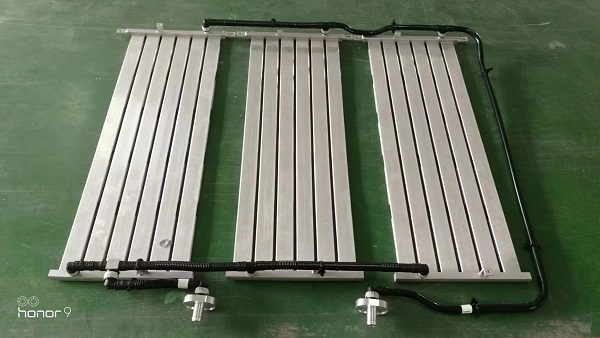Aspects associated with aluminum water cooling plates
2024-01-04
An aluminum water cooling plate, often referred to as an aluminum liquid cooling plate or heat exchanger plate, is a component used in cooling systems to dissipate heat efficiently from electronic or mechanical devices. These plates are commonly employed in applications where there is a need to manage and transfer heat away from sensitive components to maintain optimal operating temperatures. One notable application is in cooling systems for electronic devices, such as power electronics, CPUs, or other heat-generating components.
Here are key features and aspects associated with aluminum water cooling plates:
1. Material:
- The cooling plates are typically made from aluminum due to its excellent thermal conductivity, lightweight nature, and corrosion resistance. Aluminum is a popular choice for its ability to efficiently transfer heat.
2. Fluid Channels:
- Aluminum water cooling plates have internal channels through which a cooling fluid, often water or a water-glycol mixture, circulates. These channels maximize the contact area between the fluid and the plate, facilitating efficient heat transfer.
3. Heat Dissipation:
- The primary purpose of the cooling plate is to absorb heat generated by electronic components. As the cooling fluid flows through the channels, it absorbs the heat, and the aluminum plate dissipates it into the surrounding environment.
4. Mounting Holes:
- Many cooling plates come with pre-drilled or machined mounting holes to facilitate easy integration into various cooling systems. These mounting points allow the plate to be securely attached to the heat-generating device.
5. Customizable Designs:
- Aluminum water cooling plates can be manufactured in various shapes and sizes to suit specific applications and conform to the shapes of the components they are cooling. This customization ensures optimal heat transfer and compatibility with the overall system.
6. High Thermal Conductivity:
- Aluminum is known for its high thermal conductivity, allowing the efficient transfer of heat from the source to the cooling fluid circulating within the plate.
7. Corrosion Resistance:
- Aluminum is naturally corrosion-resistant, which is important for components that may be exposed to water or coolants. Additionally, some plates may have protective coatings to enhance corrosion resistance.
8. Integration with Cooling Systems:
- Aluminum water cooling plates are an integral part of larger cooling systems that may include pumps, radiators, fans, and other components. These systems work together to maintain the desired operating temperatures.
9. Applications:
- Common applications include cooling systems for electronic devices such as power inverters, electric vehicle battery packs, CPUs in computers, and other high-performance electronic components.
10. Efficiency and Energy Savings:
- By efficiently dissipating heat, aluminum water cooling plates contribute to energy savings and the overall performance and reliability of electronic devices. Effective thermal management extends the lifespan and enhances the efficiency of electronic components.
Aluminum water cooling plates are crucial components in thermal management systems, playing a vital role in keeping electronic devices within their optimal temperature ranges to ensure reliable and efficient operation.



